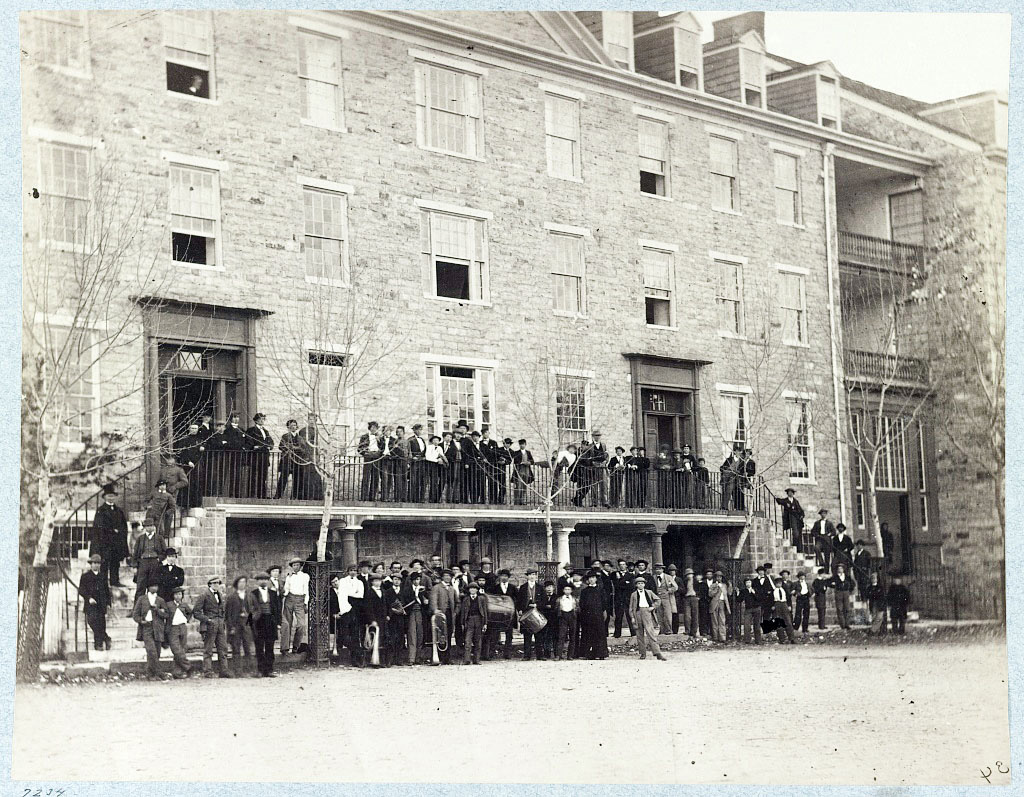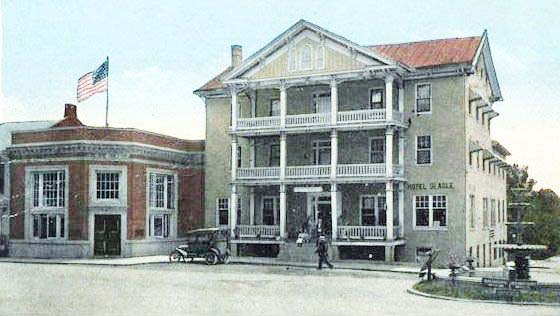1896 – too much Married
by James Rada, Jr.
Sigmund Freud once said, “If you want your wife to listen to you, then talk to another woman; she will be all ears.”
If that’s true, just imagine how attentive Phoebe Stouffer was in 1896 when she saw her husband talking to his other wife, Mary Stouffer. Actually, it was just as much a surprise to Aaron D. Stouffer of Smithsburg to find out he was married to two women.
Stouffer had first married Mary A. McPherson of Waynesboro, Pennsylvania, on October 9, 1877. Rev. Jacob Ohler performed the ceremony. The couple lived near Smithsburg for a year before they separated.
Mary then married Aaron Speake of Smithsburg in 1880. Two years later, “she executed before Justice Oswald an instrument in writing purporting to be a contract of divorcement from her husband,” according to the Emmitsburg Chronicle.
Whatever Mary had, it was not an act of divorcement. However, Stouffer believed this meant he was divorced. The following year, he married Phoebe Hovis in Waynesboro. Rev. F. F. Bahner performed the ceremony.
Stouffer and Phoebe were happy together, even more so as their family grew.
“For thirteen years Stouffer believed he was divorced from his wife,” the Chronicle reported. “Someone told him he was not and that he was guilty of bigamy, a penitentiary offense.”
Aaron was so overcome with guilt and worry about his situation that he went into State’s Attorney Charles D. Wagaman’s office in Hagerstown and “accused himself of bigamy and saying he was ready to go to jail,” according to the Chronicle.
He wept while he explained to Wagaman what had happened. His first wife, Mary, was still alive and not legally divorced from him. Wagaman believed Stouffer was sincere and offered clemency. That state’s attorney even filed a bill in the Court of Equity on Stouffer’s behalf for a divorce.
The Maryland Legislature granted equity courts jurisdiction to hear divorce applications in 1842. Before that, it required an act of the legislature to divorce. Wagaman may have used a combination of adultery and abandonment as the grounds to get the divorce approved. However, this was not the most common reason for a divorce at the time, according to Georgetown University Law Library. “Divorces from bed and board, under which the couple was still legally married, were granted for cruelty or desertion. Most petitions were for divorce from bed and board, perhaps because cruelty and desertion were the most common complaints.”
Once granted, it required that all parties involved would have to remarry and, hopefully, live happily ever after.







 In 1955, Articles of Incorporation for the Emmitsburg Little League stated the objective of the league to be, “to implant firmly in the boys of the community the ideals of good sportsmanship, honesty, loyalty, courage and reverence so that they may be finer, stronger, and happier boys and will grow to be good, clean, healthy men.” The objectives were to have been achieved by providing supervised competitive baseball games. Since 1955, thousands of boys, and now girls, too, have been impacted in a positive way by this league.
In 1955, Articles of Incorporation for the Emmitsburg Little League stated the objective of the league to be, “to implant firmly in the boys of the community the ideals of good sportsmanship, honesty, loyalty, courage and reverence so that they may be finer, stronger, and happier boys and will grow to be good, clean, healthy men.” The objectives were to have been achieved by providing supervised competitive baseball games. Since 1955, thousands of boys, and now girls, too, have been impacted in a positive way by this league.
 by Jim Houck, Jr.
by Jim Houck, Jr. In the years leading up to the Civil War, Mount St. Mary’s enjoyed prosperity. The college celebrated its golden anniversary in 1858, and student enrollment was around 200 young men and growing.
In the years leading up to the Civil War, Mount St. Mary’s enjoyed prosperity. The college celebrated its golden anniversary in 1858, and student enrollment was around 200 young men and growing.